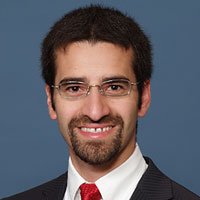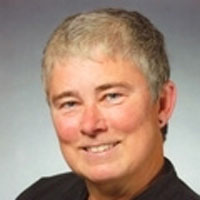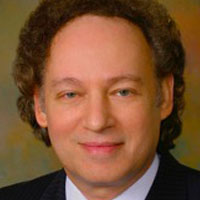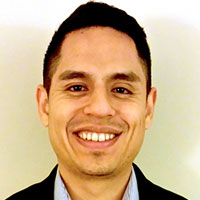About This Webinar
Photonics Media invites you to join us for our upcoming FREE digital conference, "Photonics for Ophthalmology." The event will feature several 15-minute online presentations on the use of light-based imaging and surgical techniques for diagnosing and treating eye conditions. Brief question-and-answer sessions will follow each presentation. Presentation topics include photo-mediated ultrasound therapy, ophthalmologic lasers, intraocular lenses, photobiomodulation and various aspects of optical coherence tomography.
Photonics for Ophthalmology
Digital Conference Schedule
Noon-12:05 p.m. EDT: Introduction
12:05 p.m.-12:25 p.m. EDT: Femtosecond Laser Technology Driving Innovation in Ophthalmology, Matthias Schulze, Coherent Inc.
12:25 p.m.-12:45 p.m. EDT: Photo-Mediated Ultrasound Therapy as a Novel Method to Selectively Treat Small Blood Vessels, Dr. Yannis Paulus, University of Michigan
12:45 p.m.-1:05 p.m. EDT: Photobiomodulation Protects Mitochondrial and Retinal Function in a Rodent Model of Retinitis Pigmentosa, Janis T. Eells, University of Wisconsin-Milwaukee
1:05 p.m.-1:25 p.m. EDT: Optical Coherence Tomography Angiography (OCTA) vs. Adaptive Optics Scanning Light Ophthalmoscope Fluorescein Angiography (AOSLOFA) – A Quantitative and Qualitative Comparison Study, Dr. Richard Rosen, Icahn School of Medicine at Mount Sinai and New York Eye & Ear Infirmary at Mount Sinai
1:25 p.m.-1:45 p.m. EDT: Visible-Light Optical Coherence Tomography for Functional Retinal Imaging, Hao F. Zhang, Northwestern University
1:45 p.m.-2:05 p.m. EDT: 4D Microscope-Integrated Optical Coherence Tomography for Image-Guided Human Ocular Surgery, Oscar Carrasco-Zevallos, Duke University
2:05 p.m.-2:25 p.m. EDT: Advances in Model Eyes and Tissue Phantoms for Optical Coherence Tomography, Scott Rowe, Rowe Technical Design Inc.
2:25 p.m.-2:45 p.m. EDT: Optical Concepts Used for Multifocal and Other Advanced Intraocular Lenses, Michael Simpson, Simpson Optics LLC
2:45 p.m.-3:05 p.m. EDT: Cataract vs. Lens Replacement Surgery, Roger Reiss, SPIE President Award 2000 recipient; Original Ad Hoc Chairperson of SPIE Optomechanics Group
3:05 p.m.-3:10 p.m. EDT: Concluding remarks
Femtosecond Laser Technology Driving Innovation in Ophthalmology
 Matthias Schulze, Coherent Inc.
Matthias Schulze, Coherent Inc.
Ophthalmology represents the biggest market for medical lasers. Over the past 15 years, elective ophthalmic procedures have gained momentum and enjoyed ever wider adoption, most notably LASIK vision correction procedures. At first the only laser used in LASIK was the excimer to shape the cornea. The necessary flap in the cornea was created with a microkeratome, a mechanical instrument. But when femtosecond laser technology became readily available in a simple-to-use, high-reliability format, this became the tool of choice to create the flap, in an improved procedure called "fs-LASIK."
In the past five years fs laser technology has successfully entered an even bigger market, the cataract market. This degraded lens condition is becoming increasingly important with the worldwide aging population. In the conventional treatment, a surgeon replaces the cataract degraded lens with an IOL (intraocular lens). This vision restoration is reimbursable and is considered nonelective. However, the use of a fs laser improves surgical precision and allows the surgeon to use an IOL customized for the specific patient. The opportunity to incorporate vision correction, not just vision restoration, is defining one of the biggest business opportunities in ophthalmology; it is expected to become bigger than the LASIK market. The path to wider adoption of LRCS (Laser Refractive Cataract Surgery) is to bring awareness of the benefits of combining the mandatory cataract lens replacement with vision correction equivalent to LASIK and potentially even offsetting the effects of presbyopia — all in one procedure. The goal for the next decade is thus to make LRCS a lifestyle surgery with a cash-basis component, along a similar adoption path to that previously followed by LASIK.
Matthias Schulze is Director of Marketing, OEM Components & Instrumentation for Coherent Inc. He joined Coherent in 1995 as a sales engineer in Germany and subsequently has held various positions in worldwide marketing. He earned his Ph.D. in physics from the Technical University in Berlin.
Photo-Mediated Ultrasound Therapy as a Novel Method to Selectively Treat Small Blood Vessels
 Dr. Yannis Paulus, University of Michigan
Dr. Yannis Paulus, University of Michigan
Retinal and choroidal neovascularization play a pivotal role in the leading causes of blindness, including macular degeneration and diabetic retinopathy, but conventional laser damages surrounding tissue. Using low intensity laser concurrently with relatively low intensity ultrasound, Paulus developed a novel treatment treating small vessels without damaging surrounding tissue: photo-mediated ultrasound therapy (PUT). Methods: An integrated high intensity focused ultrasound (HIFU, H102 Sonic Concepts) and Nd:YAG laser pumped tunable optical parametric oscillator (Surelite OPO PLUS, Continuum) with 5-ns, 10 Hz pulses was devised. 300 fertilized chicken eggs were treated with laser + ultrasound, ultrasound-only, or laser-only at wavelengths of 532, 578, or 650 nm. Ultrasound bursts with 10 percent duty cycle at 1 MHz were applied concurrently with laser. Results:At 532 nm laser and 1.1 MPa ultrasound, 4 mJ/cm2 laser fluence induced vein size reduction from 206.21 ± 44.60 to 99.81 ± 44.49 µm (p<0.01). Six mJ/cm2 and 8 mJ/cm2 iinduced vein rupture in the majority of cases (p<0.001). No effect was noted for laser or ultrasound alone. For the 578-nm laser, a dose response-induced vein shrinkage was induced. For the 650-nm laser, the PUT system with laser power from 6 to 18 mJ/cm2 selectively affected arteries over veins. Conclusions: In chicken embryos, 532 nm laser light can mediate ultrasound pulses to induce blood vessel shrinkage. Selectivity of treating veins and arteries can be achieved with adjusting the wavelength. PUT may have a role in treating blood vessels without damaging surrounding tissue. Yannis M. Paulus, Xinmai Yang, and Xueding Wang have applied for a patent on PUT "Method and Apparatus for Removing Microvessels".
Dr. Yannis Paulus is an academic vitreoretinal surgeon who investigates novel retinal imaging and treatment systems. He completed medical school and ophthalmology residency at Stanford University and a surgical retina fellowship at Johns Hopkins University. His laboratory develops photoacoustic and molecular imaging, photo-mediated ultrasound therapy, restorative laser therapy and smartphone-based retinal photography.
Photobiomodulation Protects Mitochondrial and Retinal Function in a Rodent Model of Retinitis Pigmentosa
 Janis T. Eells, University of Wisconsin-Milwaukee
Janis T. Eells, University of Wisconsin-Milwaukee
Low energy photon irradiation in the far-red (FR) to near-infrared (NIR) range of the spectrum (630 to 900 nm), collectively termed “photobiomodulation” (PBM), has been shown to attenuate the severity of retinal disease in experimental and clinical studies. The purpose of this study was to test the hypothesis that a brief course of 830-nm PBM would preserve mitochondrial function and protect against photoreceptor loss in a rodent model of retinitis pigmentosa, the P23H transgenic rat. Methods: P23H pups were treated once per day at 830 nm using a light-emitting diode array [180 s; 25 mW/cm2; 4.5 J/cm2] (QBMI Photomedicine, Barneveld WI) from postnatal day (p) 10 to p25. Sham-treated rats were restrained for 180 seconds, but not exposed to NIR light. The status of the retina was determined at p30 by measurement of retinal metabolic state by NADH/FAD redox imaging, photoreceptor function by electroretinography (ERG) and retinal morphology by spectral domain optical coherence tomography (SD-OCT). Results: 830-nm PBM preserved retinal metabolic state, retinal function and retinal morphology in NIR-treated animals in comparison to the sham-treated group. PBM protected against the shift in oxidative state of the mitochondrial respiratory chain observed in sham-treated animals. Rod and cone-mediated ERG responses over a range of flash intensities (from 10 mcd.s/m2 to 25000 cd.s/m2) were 50 percent greater in NIR-treated rats compared to sham controls. SD-OCT studies showed that NIR treatment preserved the structural integrity of the retina. Conclusions: Results from this study demonstrate the mitoprotective and retinoprotective effects of 830-nm PBM in a widely studied animal model of retinal degeneration and support the use of PBM as an innovative, noninvasive therapeutic approach for the treatment of retinal degenerative disease.
Eells has shown that photobiomodulation by far-red to near-infrared light restores the function of damaged mitochondria, up-regulates the production of cytoprotective factors, and prevents cell death. Investigations by her research team have demonstrated improved outcomes in experimental models of retinal disease and in clinical retinal disease.
Optical Coherence Tomography Angiography (OCTA) vs. Adaptive Optics Scanning Light Ophthalmoscope Fluorescein Angiography (AOSLOFA) – A Quantitative and Qualitative Comparison Study
 Dr. Richard Rosen, New York Eye and Ear Infirmary of Mount Sinai
Dr. Richard Rosen, New York Eye and Ear Infirmary of Mount Sinai
OCTA is a high resolution imaging technique for noninvasive quantitative visualization of retinal microvasculature. A side-by-side comparison was performed using higher resolution Ophthalmoscope Fluorescein Angiography(AOSLOFA) in healthy and diseased eyes to evaluate quantitative and qualitative similarities and differences. Methods: Twelve eyes with diabetic retinopathy, branch retinal vein occlusion, or sickle cell retinopathy and four control eyes were imaged using a commercial OCTA system (Optovue Avanti) and our laboratory AOSLOFA. A 10 x 10° OCTA scan and a 6 x 6° AOSLOFA montage centered at the fovea were obtained for each eye. Foveal avascular zone (FAZ) area, perimeter, acircularity and vessel density measurements were compared using paired t-tests, along with differences in vessel patterns and deletions. Results: OCTA demonstrated excellent qualitative agreement with AOSLOFA as well as no statistically significant difference in FAZ perimeter, acircularity or vessel density. FAZ area showed a very small but statistically significant difference (OCTA 0.38±0.27 vs AOSLOFA 0.38±0.28 mm; p=0.02). Some vessel segments seen on AOSLOFA did not appear on OCTA and vice versa. While OCTA, has a lateral resolution 10 times lower than AOSLOFA (20 µ vs. 2 µ) it surpasses AOSLO FA in clinical application given its shorter scan time, near immediate image reconstruction and the ability to delineate multiple capillary layers in a single scan. Conclusions: OCTA shows excellent agreement with AOSLOFA around the fovea of healthy and diseased eyes with minor differences. While these results support the validation of OCTA, larger longitudinal studies are needed to validate its predictive capabilities
Richard B. Rosen, M.D., is professor and vice chairman, surgeon director, retina service chief and director of research for the ophthalmology department at the New York Eye and Ear Infirmary of Mount Sinai and the Icahn School of Medicine at Mount Sinai in New York City.
Visible-Light Optical Coherence Tomography for Functional Retinal Imaging
 Hao F. Zhang, Northwestern University
Hao F. Zhang, Northwestern University
As the elderly populations of Europe, China and the U.S. grow, the prevalence of major ophthalmic disorders such as glaucoma, age-related macular degeneration (AMD) and diabetic retinopathy are also expected to increase, fueling new demand for improved diagnostic and surgical systems to help physicians manage and treat these diseases. Optical coherence tomography (OCT) devices provide high-resolution imaging and proven clinical benefit in improving the patient’s quality of life. Despite the success of OCT, however, the full potential of this imaging modality has yet to be realized. While other imaging methods such as MRI and positron emission tomography (PET) have been revolutionized with the development of functional imaging (fMRI and fPET), fOCT remains an emerging technology. Visible-light OCT (Vis-OCT) represents a cutting-edge fOCT imaging technique that aims to dramatically improve the diagnostic capabilities and clinical benefit of OCT in ophthalmology. VisOCT is currently the only fOCT imaging modality capable of combining both high resolution structural imaging of blood vessels with precise measurements of metabolic activity, such as in the retina. Using dual band scanning with visible light and NIR light wavelengths, Vis-OCT represents a next-generation fOCT tool with the potential to fundamentally change how ophthalmologists use OCT in the diagnosis, treatment and monitoring of numerous major ocular disorders.
Hao F. Zhang is an associate professor of biomedical engineering at Northwestern University. He received his bachelor's and master's degrees from Shanghai Jiao Tong University, Shanghai, and his Ph.D. from Texas A&M University. From 2006 to 2007 he was a post-doctoral fellow at Washington University. His research interests include optical coherence tomography, photoacoustic microscopy, superresolution imaging, ophthalmology and early cancer mutation.
4D Microscope-Integrated Optical Coherence Tomography for Image-Guided Human Ocular Surgery
 Oscar Carrasco-Zevallos, Duke University
Oscar Carrasco-Zevallos, Duke University
Ophthalmic surgeons manipulate micron-scale tissues using stereopsis through an operating microscope and instrument shadowing for depth perception. While ophthalmic microsurgery has benefited from rapid advances in instrumentation and techniques, the basic principles of the stereo operating microscope have not changed since the 1930s. Optical Coherence Tomography (OCT) has revolutionized ophthalmic imaging and is now the gold standard for preoperative and postoperative evaluation of most retinal and many corneal procedures. Carrasco-Zevallos and others have developed initial microscope-integrated OCT (MIOCT) systems to image live human ocular surgery, but these were limited to 2D real-time imaging and required offline post-processing for 3D rendering and visualization. Carrasco-Zevallos presents a novel 4D MIOCT system that can record and display the 3D surgical field stereoscopically through the microscope oculars using a dual-channel heads-up display (HUD) at up to 10 micron-scale volumes per second. He demonstrates that 4D MIOCT guidance improves the accuracy of depth-based microsurgical maneuvers (with statistical significance) in mock surgery trials in a wet lab environment. Additionally, 4D MIOCT in 80 human eye surgeries, including retinal and anterior eye procedures, revealed previously unrecognized lesions that were invisible through the operating microscope during standard surgical maneuvers. These lesions, such as residual and potentially damaging retinal deformation during pathologic membrane peeling, were visualized in real time by the surgeon. Our integrated system provides an enhanced 4D surgical visualization platform that can improve current ophthalmic surgical practice and may help develop and refine future microsurgical techniques.
Oscar Carrasco-Zevallos is a Ph.D. graduate student at Duke University, working under the supervision of Joseph Izatt. At Duke, Carrasco-Zevallos is supported by a National Science Foundation Graduate Research Fellowship, a Ford Foundation predoctoral fellowship, and a National Institute of Health T-32 Medical Imaging Training Grant. His research interests include optical coherence tomography imaging for ophthalmic and intrasurgical applications.
Advances in Model Eyes and Tissue Phantoms for Optical Coherence Tomography
 Scott Rowe, Rowe Technical Design Inc.
Scott Rowe, Rowe Technical Design Inc.
Rowe documents his latest work in developing a new eye model with a solid-state cornea and liquid filled anterior and posterior chambers designed for demonstrating, validating and comparing ophthalmic Optical Coherence Tomography (OCT) instruments. Whole Model Eye (WME) phantoms can serve a variety of purposes, including demonstrating instrument functionality and performance in the clinic and exhibit hall, validating axial length measurements from different commercial instruments and as an aid for the R&D engineer and field service technician in the development and repair of instruments, respectively. The ideal eye model for OCT, the optical cross-sectional imaging modality, would have a volumetric morphology and scattering and absorption properties similar to that of a normal human retina. These include a multi-layered structure of equivalent thickness to nominal human retinal layers, including an inner limiting membrane (ILM) layer, neurosensory layers with appropriate backscattering properties, and a retinal pigment epithelium. A filled and sealed tissue phantom relieves the user of constant cleaning and maintenance associated with the more common water bath model eyes. Novel processes have been developed to create a crystalline lens phantom within the model eye that closely mimics the reflectance and scattering coefficients of the human crystalline lens, as imaged by various modalities of OCT.
Scott Rowe is an inventor, entrepreneur, optical engineer and instructor with a passion for bringing disruptive products and technologies to successful market introductions. Currently he is developing Rowe Technical Design Inc., focused on manufacturing tissue phantoms for testing diagnostic devices, and consulting on the development of a variety of therapeutic and diagnostic instruments for ophthalmologists. He holds 21 issued U.S. patents, and is an instructor with University of California, Irvine Extension, in optical engineering.
Optical Concepts Used for Multifocal and Other Advanced Intraocular Lenses
 Michael Simpson, Simpson Optics LLC
Michael Simpson, Simpson Optics LLC
Multifocal intraocular lenses (IOLs) have been used for over 25 years following cataract surgery. Modest unwanted visual phenomena and limitations in the range of focus have been the greatest potential drawbacks of IOLs. The increased use of handheld devices has coincided with the evaluation of additional designs, with lower add powers used to adjust focus location. Diffractive surfaces predominate because of a reduced sensitivity to pupil diameter, with bifocal, distance-dominant bifocal and trifocal designs. Recent refractive multifocal designs also address pupil limitations. Interest in “extended depth of focus” IOLs is leading now toward a continuum of designs from monofocal to multifocal.
Michael Simpson worked for many years in the research and development of intraocular lenses (IOLs) at Alcon Co., where he was particularly involved with multifocal IOLs. He is now an independent consultant, specializing primarily in technical issues relating to the design, fabrication and testing of ophthalmic lenses, and their clinical performance.
Cataract vs Lens Replacement Surgery
 Roger Reiss, Original Ad Hoc Chairperson of SPIE Optomechanics Group
Roger Reiss, Original Ad Hoc Chairperson of SPIE Optomechanics Group
After having cataract surgery, Reiss became deeply interested in the human eye. Given that the eye is an instrument, it fell in line with his professional interest in instruments. The human eye is also a detector, or sensor. Despite its designation "cataract surgery," what is achieved through this procedure is a lens replacement with a man-made lens. Reiss’ surgery led him to consider the following: 1. The eyeball and the eye lens are both optical transmission quality fluid material, not found anywhere in nature; and 2. The eye lens focal length is determined by many variables and a careful and complex calculation that requires adjustment according to the age of the individual to determine the proper eye lens curvature.
Roger Reiss has been involved with the design, development, fabrication, assembly and testing, including alignment, of various precision instruments and instrument projects throughout his career. He received his bachelor’s degree in mechanical engineering from the Massachusetts Institute of Technology. Reiss was a columnist and contributing editor for the SPIE technical newspaper, OE Reports (1989-2000), and is a fellow of SPIE. He received the SPIE President’s Award in 2000 for his contributions to the field of optomechanical engineering and instrument design. Reiss is presently a private consultant, producing a number of reference technical booklets on various topics. He has written over 50 papers, articles and lectures for a several publications.